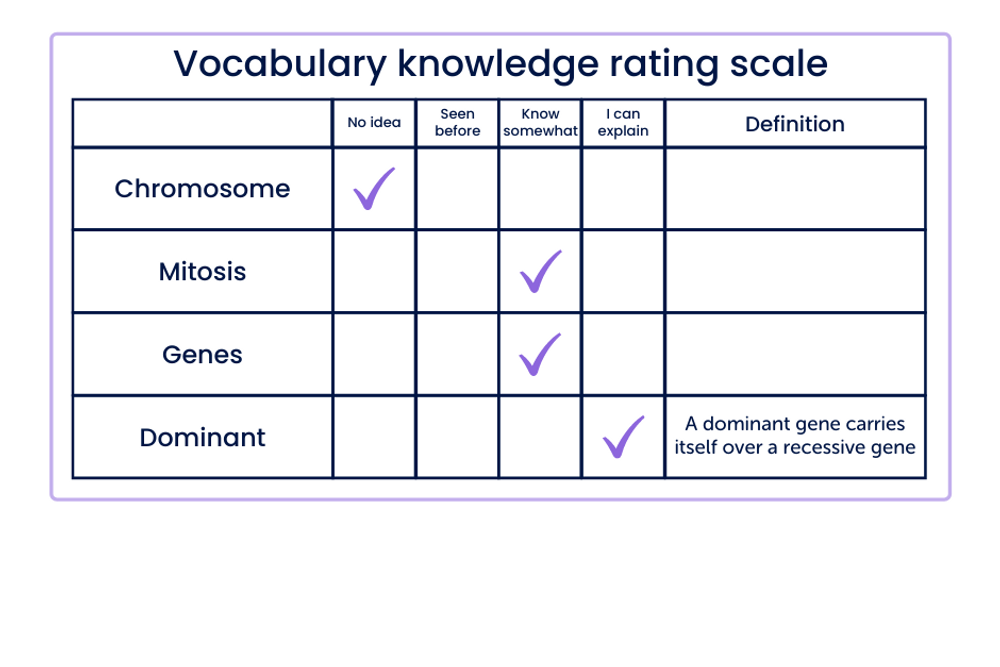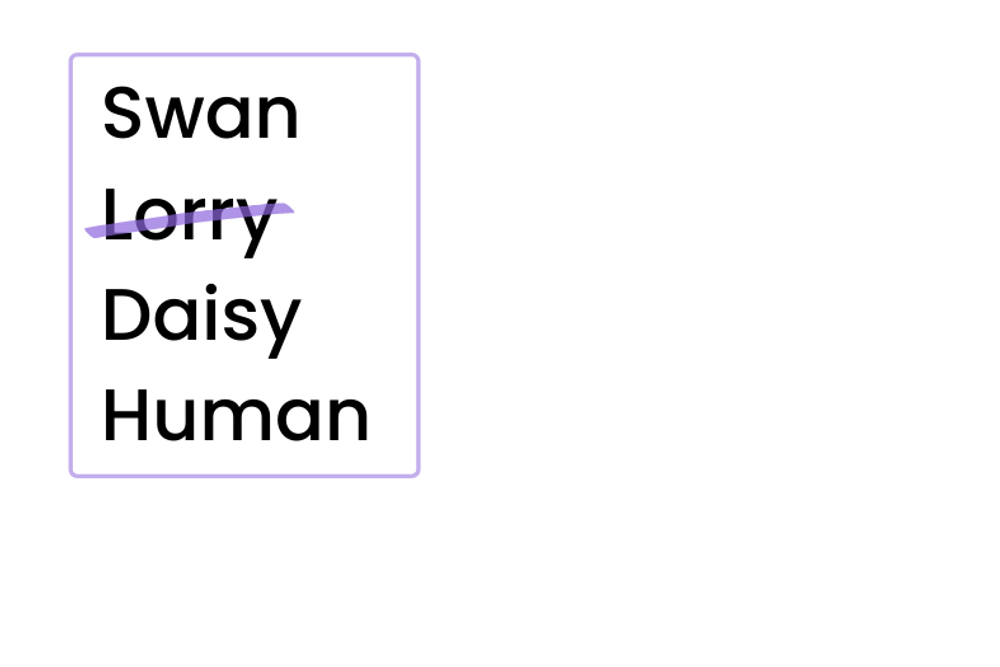Tier 3 vocabulary teaching can be incorporated into any lesson – whatever the subject. Here, we share tips for:
- Assessing learners’ understanding of subject-specific terminology
- Setting engaging, multimodal tasks
- Igniting social and emotional aspects of learning (SEAL)
- Encouraging learners to reflect on how they learn new words (meta-cognitive learning)
Why do learners struggle to grapple with subject-specific terminology?
Recent research by the Education Endowment Foundation into improving literacy in schools confirms how crucial subject-specific vocabulary teaching is:
"Literacy in secondary school must not simply be seen as a basket of general skills. Instead, it must be grounded in the specifics of each subject. Crucially, by attending to the literacy demands of their subjects, teachers increase their students’ chance of success in their subjects. Secondary school teachers should ask not what they can do for literacy, but what literacy can do for them."
However, many learners may struggle with Tier 3 vocabulary as it is often unfamiliar. A Year 8 student, for example, will rarely see ‘chromosome’ or ‘tributary’ in their wider reading.
When learners can’t understand subject-specific terminology, they can’t access the content being taught. Luckily, content and vocabulary don’t have to be taught separately.
Our ten methods for incorporating teaching new terms into lesson plans across the curriculum can be shared with teachers of any subject. They can also help you develop a whole-school literacy strategy. Our Tier 3 vocabulary curriculum tool, Bedrock Mapper, can easily enable teachers across your school to teach and assess their own subject-specific vocabulary.
Find out more about Bedrock Mapper
Bedrock Mapper enables schools to deliver quality teaching and learning of subject-specific vocabulary.
10 top tips for teaching subject-specific terminology
1. Preselect key terms
To avoid wasting time teaching terms learners already know, preselect the words you’re going to focus on. Look ahead to the next lesson, think about which terms are going to prove tricky, and then assess learners’ understanding beforehand.
To do this, you can use a grid like this one.

Vocabulary Knowledge Rating Scale
Alternatively, try making a continuum. Place a word on the board and ask learners to place themselves along the continuum depending on how well they understand it. It may take a few minutes to plan, but it’ll save you lots of time in the long run.
2. Present terms in context
Context is essential when we try to understand new words. Don’t start your lesson with a confusing terms-and-definitions match up. Instead, give the class a piece of text that uses the terms in context. Once they’ve seen the new words as part of a whole, you can start to explain what they mean on their own.
3. Break words down into their morphology
Teaching morphology – breaking words into prefixes, suffixes and roots – is a really effective way to help students make links with a familiar language. So many terms that seem intimidating at first actually contain parts that students already know.
For example, they will know that ‘biology’ is the study of living things. Breaking this down and looking at the prefix ‘bio’ – life – will help them define what the new word ‘biography’ means.
Find out more about using root words in our blog on providing literacy CPD.
4. Create terminology trading cards
As you move through a unit and come across new key terms, get your learners to design trading cards to represent the new concepts. On the front, they should write the term and draw a related image. On the back, they write a description plus two key points. Making the cards helps learners to remember the new terminology, and there are also lots of games you can play with them.
For example, you could split learners into two teams. Team A can only look at the term and picture side. Team B can only look at the description side. Learners from Team B might ask: “Who has a type of energy that comes from the Earth?” Team A might ask: “Who has a description of geothermal energy?” Once everyone has found their partner, learners can swap trading cards.
5. Make justified lists
Often learners understand what they're being taught, but aren't sure how to explain it. Asking learners to justify or classify something can be a great way to encourage learners to expand on their reasoning, strengthening their oracy.
For example:

When asked to pick the odd one out from this list, many learners might find this easy - however, when asked to explain why it is different, few learners might use the word organism. When learners give the explanation, "Well, a lorry isn't a living thing," you can take an additional step and encourage them to come up with their own definition for the Tier 3 word organism.
6. Try charades
The great thing about Tier 3 terms is that they're often very difficult to act out. Getting your learners to try and represent the term tectonic is a challenge, but one that will really encourage your class to explore their understanding of new Tier 3 language.
Split your class into two groups and have learners take it in terms to act out Tier 3 terms, while other learners guess the meaning.
Transform tier 3 vocabulary with Bedrock Mapper
Mapper makes targeted subject-specific vocabulary instruction that is personalised to every learner, easy.
7. Play taboo
Write your new Tier 3 term on a piece of paper, and pick five of the most obvious terms to describe it. These descriptors are now taboo - learners must try and explain the Tier 3 term to their class without using those five obvious words.
By encouraging learners to use new words to describe Tier 3 language, their understanding of the new term's context deepens - and you might even be able to encourage them to use ambitious Tier 2 vocabulary to describe the term!
8. Make bingo cards
Give each learner a card with nine new Tier 3 words in a square. From there, you tell the learners the words and they cross them out, just like normal bingo - except instead of giving your learners the word, give them a mixture of clues, such as definitions, images, metaphors and more.
What is to learners a fun game of bingo is actually a fantastic dual-coding exercise, deepening their knowledge of subject-specific contexts.

Vocab Bingo
9. Try a game of jeopardy
Flip the structure - instead of you offering a definition and learners replying with a term, give your learners an answer and let them come up with a question.
For example, if you say equilateral triangle, possible answers from learners might be, "Which type of triangle has three equal sides?" or "Which type of triangle has a 60° angle on every corner?"

